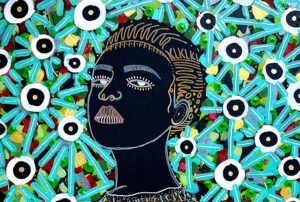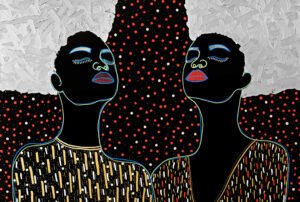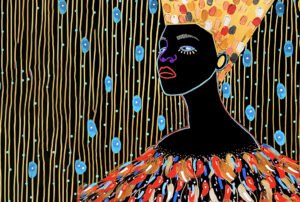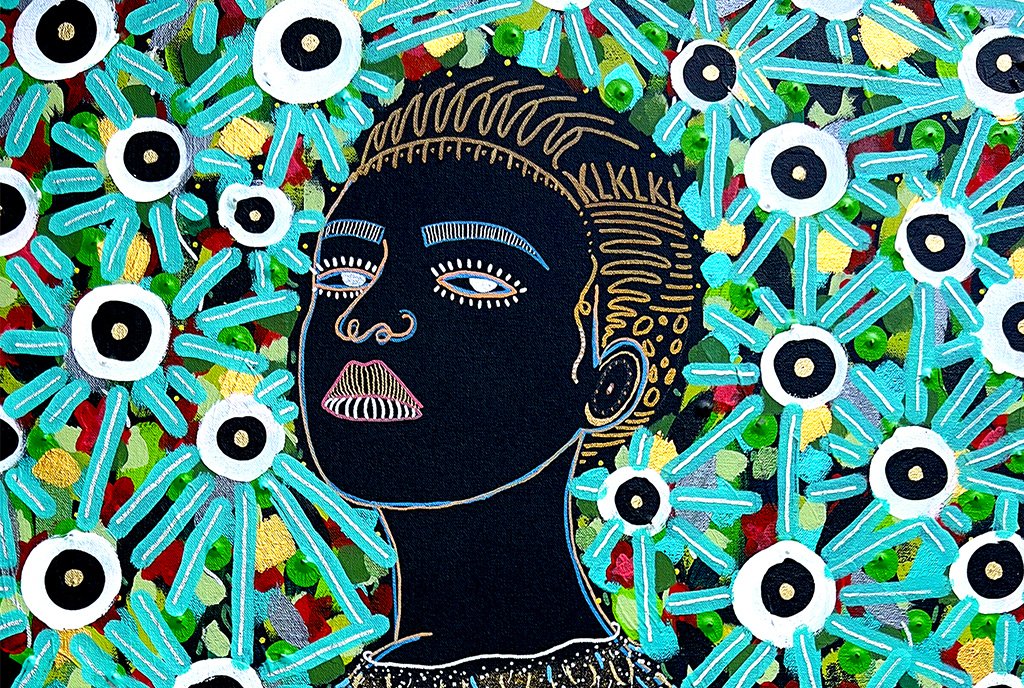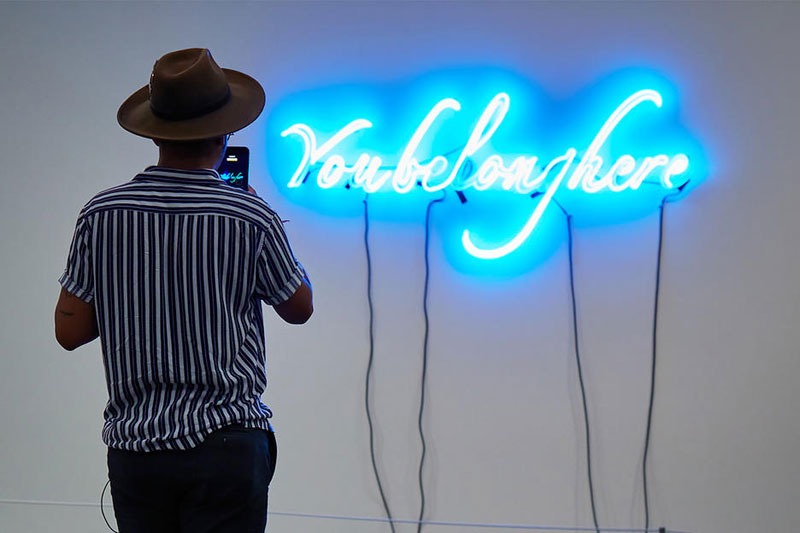
Demand for diversity, equity, and inclusion (DEI) work1 has risen exponentially since the murder of George Floyd and the racial uprisings that followed. As nonprofit organizations envision what becoming an antiracist organization looks like, they often retain external DEI capacity-builders to support them along that journey.
Many people who work in race equity, including consultants and capacity builders, are BIPOC (Black, Indigenous, and People of Color). Furthermore, many are Black women and women of color. At CRE (Community Resource Exchange), where both of us work, the lead senior consultant of our DEI practice and other team members are predominantly Black women.
This is visionary and revolutionary work. It involves hope, faith, and a real belief that people, communities, and institutions can and are willing to change. However, beginning to undo a legacy of structural racism and culture of European/white norms comes at great cost, which is unequally borne by BIPOC people. Some of those costs are known and necessary—they are more of an investment and a stretching into new ways of being. Others are hidden, and because they are not recognized, they take a severe, disparate toll upon the people doing this work.
Known Costs
Briefly, known costs center around the investment of one’s own transformation in this work and the dedication of resources of organizations toward this long-term goal. DEI, racial equity, and antiracist work is not meant to be comfortable. Racism is uncomfortable, and it was inherited by all of us in one way or another—there is no room on the sidelines while others do the work. Awakening, growth, change, and evolution are meant to stretch participants and challenge the norms we have collectively allowed, tolerated, perpetuated, suffered, and/or benefited from. This is not to say that anyone should be harmed or find their psychosocial safety attacked; however, participants should feel something within this transformative work. Discomfort and vulnerability will be part of the process. It requires practitioners to sit with discomfort and ask themselves what to do with that discomfort to make change. This work might cost something. It requires people to stretch and to invest in change themselves and to be brave.
DEI work takes dedicated time, energy, and frankly, a budget. Time and again, we receive requests that ask our team to undo institutional racism for a few thousand dollars. If only it were so easy. Our firm also provides support for strategic planning, and the contrast between the budgets for a three-year strategic plan versus the budgets to engage in antiracist organizational change work is unbelievable.
It is sobering to see how undoing institutional racism is expected to be done on the cheap. It takes time for a consultant to analyze, listen, and understand how racism shows up within a given organization. Then the consultant must assess the capacity of senior leaders and managers to start, sustain, and be brave enough for this organizational shift. This work takes time, courage, a realistic budget over multiple years, and an intentional commitment to the marathon and not the sprint that advancing DEI work requires.
Hidden Costs
The known costs are worthy investments in personal growth and in resourcing transformative organizational change. The hidden costs, however, center around the heavy toll that DEI work exacts on the people who facilitate, train, educate, and embody the work. This is not the same kind of work as other internal organizational initiatives. There is a physical and spiritual cost, particularly for those doing racial justice work while also personally navigating racism’s many impacts in their own lives, communities, country, and nonprofits. Calling out workplace racist behaviors and marginalizing dynamics that cause people harm (staff, leaders, and boards) is not easy. This is additional labor to hold the emotions of others. It also comes at great personal and professional risk if you are trying to do this work within your own organization, with your peers and superiors.
The toll that is felt by the teams that we work with in our DEI engagements, and that we see in our work at large, often shows up as follows:
- We see harmful group dynamics that marginalize some staff identities over others during DEI sessions. Countless times we get thanked afterwards, privately by the staff—usually BIPOC people—for stepping in to facilitate or name the behavior that was up until that point unseen by the larger (read, whiter) group.
- We see colleagues personally and professionally attacked by their leaders or peers for naming what others have noticed and were too afraid to name.
- We see and feel real fatigue—and, if you’re BIPOC, and particularly if you’re Black, this Black fatigue, as coined by Mary-Frances Winters, “causes mental, physical, and spiritual maladies that are passed down from generation to generation.”
- We witness and can predict staff transition. People leave their organizations after a few years of pushing this work internally (three to four years on average). The most telling testimonial stated, “I can’t care more about undoing racist norms within this workplace than my own executive director or CEO.”
How does it feel as a Black woman consultant to do DEI work? Well, since one of us, Andrea, is a Black woman consultant, here are some of her direct observations:
- I feel personally responsible for the people in the room, particularly BIPOC and multi-marginalized people. I internalize the rage, anxiety, frustration, doubt, and pain in workplace dialogues, listening to stories of harm while other colleagues remain quiet.
- I feel nervous that I will fail “my people” or my ancestors, or that I will fail professionally by taking a risk—speaking truth to power or pushing back with a triggered client.
- I sometimes just want to cancel or reschedule DEI work with a client when I don’t feel strong enough to lead it, but I still get out of bed and do the work.
- I’m terrible at practicing the self-care that I encourage my clients, people I coach, colleagues, and friends to make space for and take.
- These questions are constantly coming up:
-
- What if I, the professional facilitator, break down in tears in front of a full Zoom room of clients because this work, and the stakes if it fails, feels like I am letting BIPOC people down and ruining this small opening for workplace liberation?
- How am I supposed to cope with race equity work when another Black trans woman was murdered today, and/or last night another Asian elder was hit and painfully injured on the Lower East Side of New York City, and/or how many hundreds of Black people have been murdered since brother George Floyd took his last breath? Where is the outrage for them?
- When and how do I just pause and stop so that I can rest, recharge, so that I can be on this journey for the long haul?
Recommendations
Racial equity and justice work using the values of diversity, equity, inclusion, access, and belonging is generational work. It is a long organizational change journey. If we don’t name, know, and address the costs of this work, we risk harming and oppressing all of us, not just the folks who are tasked with leading the work. And while the risk of harm is great, the protections against it are simple and straightforward. Here is how we recommend you engage in DEI work in a way that mitigates the negative costs of doing the work and uplifts the necessary investment that makes this work meaningful.
Sign up for our free newsletters
Subscribe to NPQ's newsletters to have our top stories delivered directly to your inbox.
By signing up, you agree to our privacy policy and terms of use, and to receive messages from NPQ and our partners.
1. Be ready for this work
It is not enough to want to do DEI work. Organizations must commit to this work for the long haul.
- Please don’t do this to tick a box.
- Make sure you are ready to do values alignment work across your board and staff when engaging a DEI consultant. Be ready to acknowledge that something is not working so that we can think about what we can do next to start building more coherence around the way your values are lived into by your team.
- For those of you in positional leadership: you have some idea—or may know—where racism/exclusion shows up in your organization. Stop tolerating harm or the behaviors that do not align with your mission and values—e.g., if you have a board member who is saying things that are stereotyping or racist, act. Have the chair or another board member give feedback and set expectations for improvement or invite an exit. Do the analysis on who has gotten promoted, hired, and included in decision-making processes, compared to those who have been consistently excluded.
- For everyone: know where you sit in all of this. Look in the mirror and acknowledge the ways you are complicit and the ways you challenge white supremacist norms. Know where you are privileged and where you are oppressed. Sit with that discomfort, think, and model ways you can grow and change.
2. Resource race equity work
You can tell where an organization’s values lie when you look at its budget. Do not shortchange race equity work. And if you feel like doing that, ask yourself why, and take this opportunity to unpack biases around what is valued, who is valued, and what impact means for your organization.
- Doing this work will require paying for the downtime, the processing time, so that the internal and external facilitators of this work do not become traumatized by both what they hear and hold, and from experiencing micro-to-explicit aggressions. It will require paying for comp time, self-care, and mental health days for your team.
- Get funded for this work—this is movement-building, racial justice work, and racial justice funders should support your efforts, regardless of what your mission says. And, as an aside to racial justice organizations—you need to do this work as well. Don’t assume that your mission precludes you from needing to invest in DEI work for your team and organization.
3. Reward self-care
Self-care must be made accessible to all. Many struggle to practice self-care, so more than putting dollars behind it, self-care must become an organizational priority. Leadership must reward and model practicing self-care and build that into the cadence of organizational work. We all must figure out ways to make this a realized practice, not just an aspiration.
4. Feedback, feedback, feedback
We don’t practice “cancel culture” or just eliminate people who exhibit racist behaviors like stereotyping, implicit bias, or micro/macro-aggressions—if that were the case, everyone would be gone! People should be given feedback on how their behavior is causing harm to their colleagues or staff so they have an opportunity to change it. Then they should be given three to six months to intentionally participate in changing (possibly with a coach, self-study, or DEI learning sessions so they get tools to support change and growth). Then, if they choose or refuse to change, they can be invited to leave the board or staff. This is creating restorative and healing spaces to advance racial equity where the goal is not punishment but transformation. Of course, this assumes the behavior does not rise to the level of legal discrimination.
We must prioritize giving feedback and creating restorative spaces where the goal is not punishment but change and growth. Often, the best allying behaviors can come from someone who transforms from being an individual who caused harm to one who is now more awakened and accountable for their behavior. This doesn’t mean an absence of mistakes, but it does mean being quicker to apologize or hear feedback and to apologize without making excuses.
5. Center healing
We will all make mistakes, and how quickly we can name them, not repeat them, and restart is progress. If we can name the harm, and if we can create spaces for healing, then we invite continued participation in the work. As part of race equity work, there must also be spaces for healing that resonate with all participants.
…
Our final recommendation is, challenges notwithstanding, that we should also pause to celebrate the wins. Undoing the legacy of racism in the most real, tangible, practical way is DEI work. DEI engagements ultimately seek to awaken, individualize, reveal, heal, and then inspire folks to act differently.
We should celebrate that we are undertaking the most transformative, liberatory work for ourselves and our organizations. If we can be courageous, and if every organization, for-profit and nonprofit alike, can embrace DEI work in daily practice, then can you imagine how that impacts this country and its citizens? This is how change happens.
Note
- In this article, we use “DEI” as shorthand, although we label our own work DEIAB to also include access and belonging. Other acronyms used in our field include DEIB (Diversity, Equity, Inclusion, and Belonging); JEDI (Justice, Equity, Diversity, and Inclusion); or sometimes EDI (Equity, Diversity, and Inclusion, where equity is listed first to emphasize its importance). For more detail, see Dax Devlon-Ross, “Generational Differences in Racial Equity Work,” NPQ, April 29, 2021.



